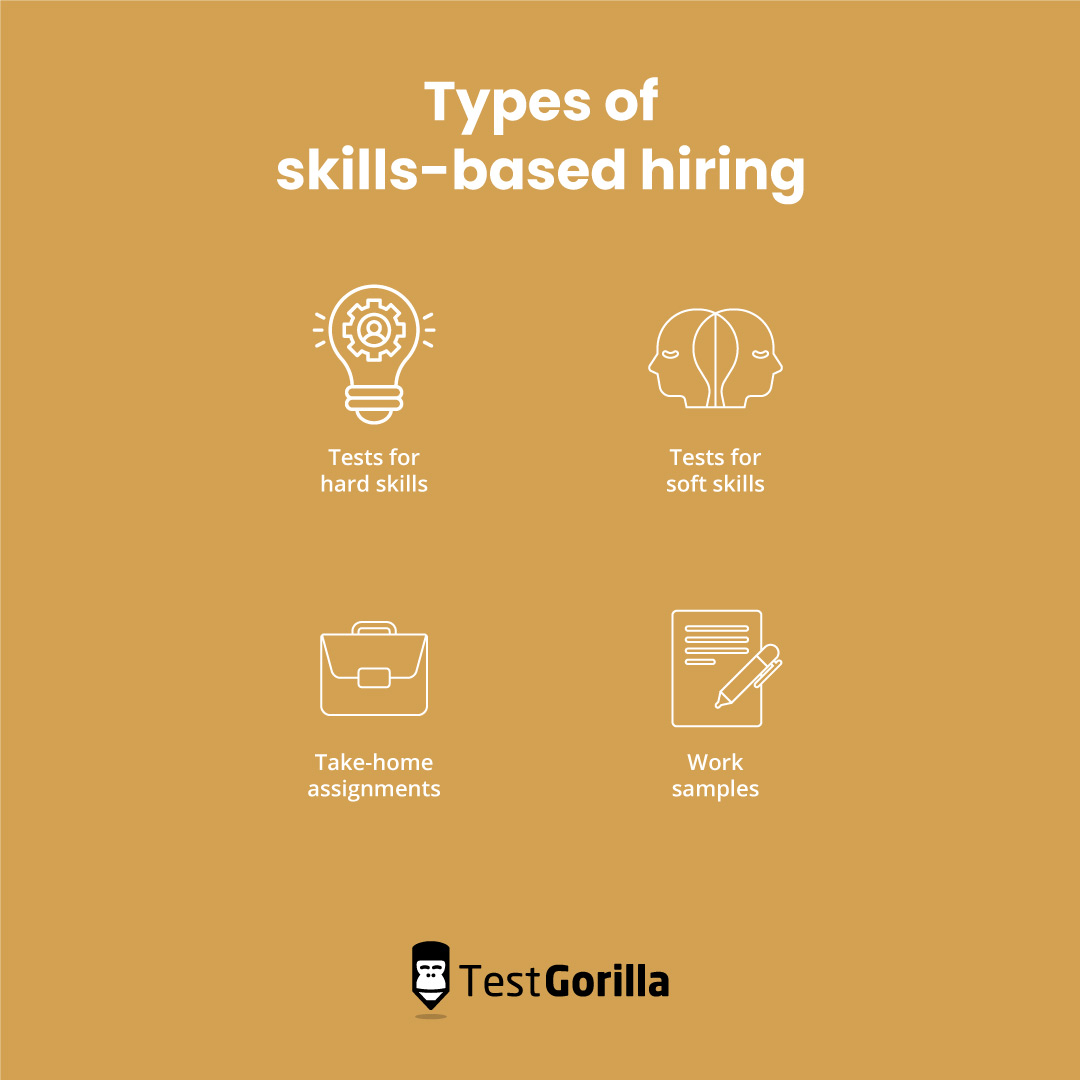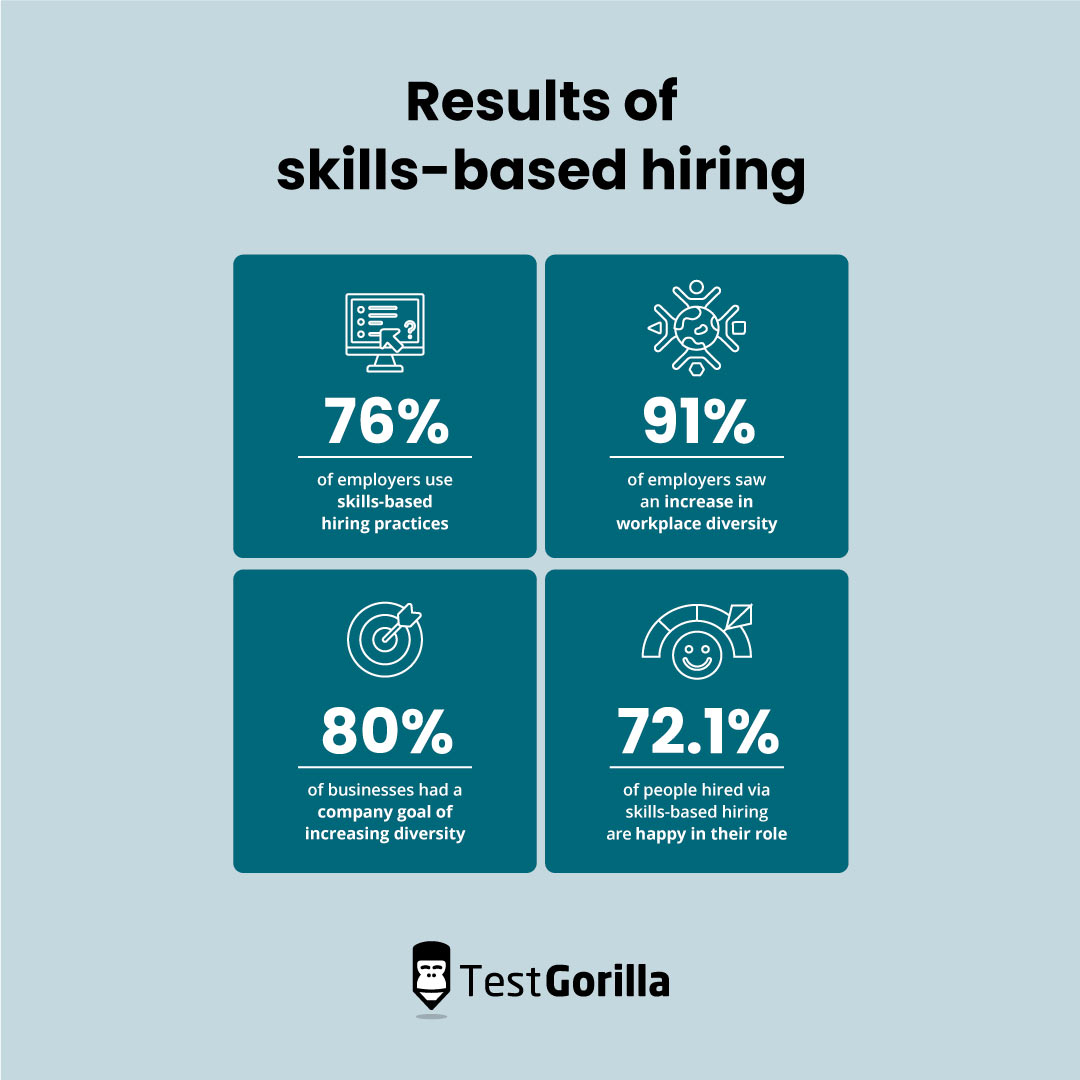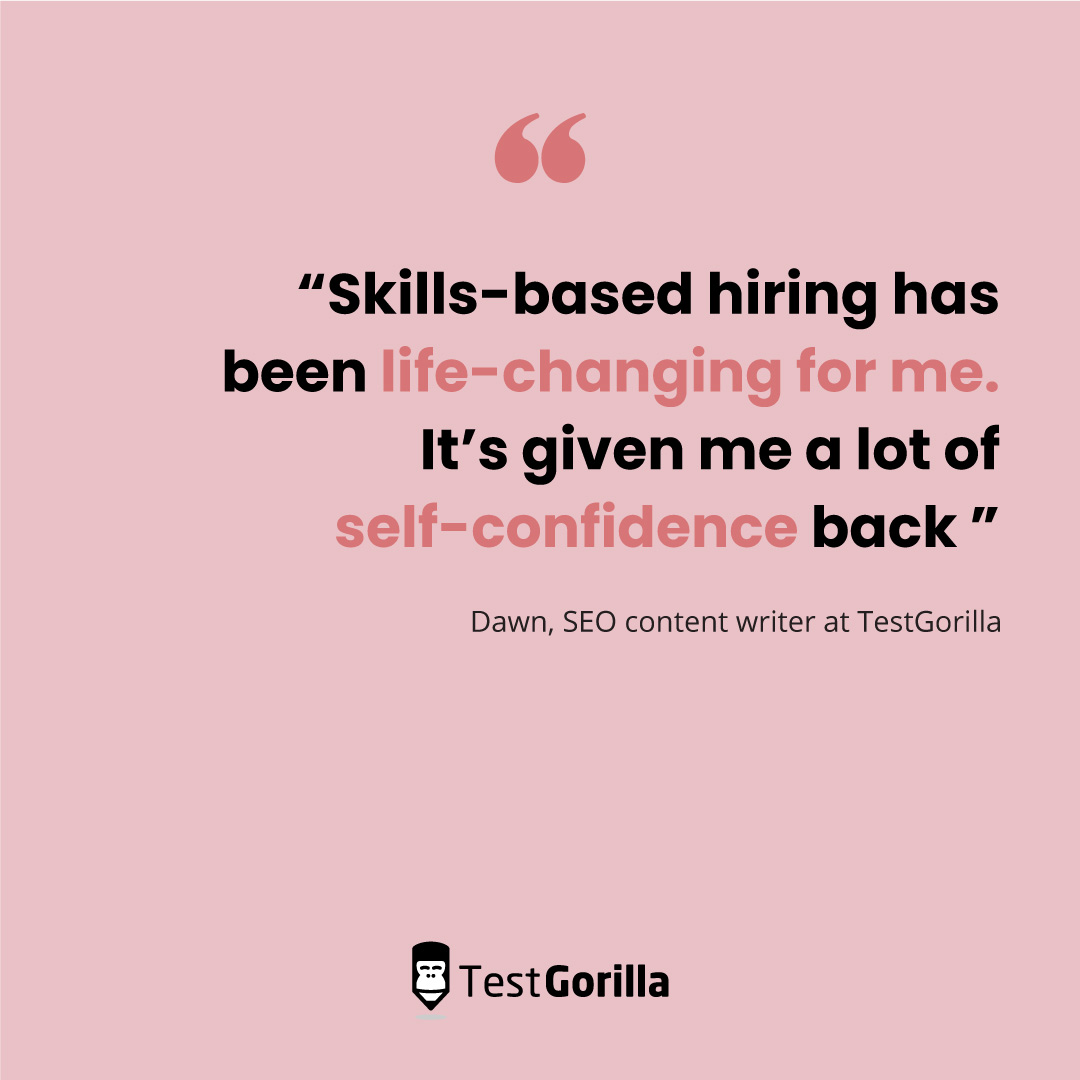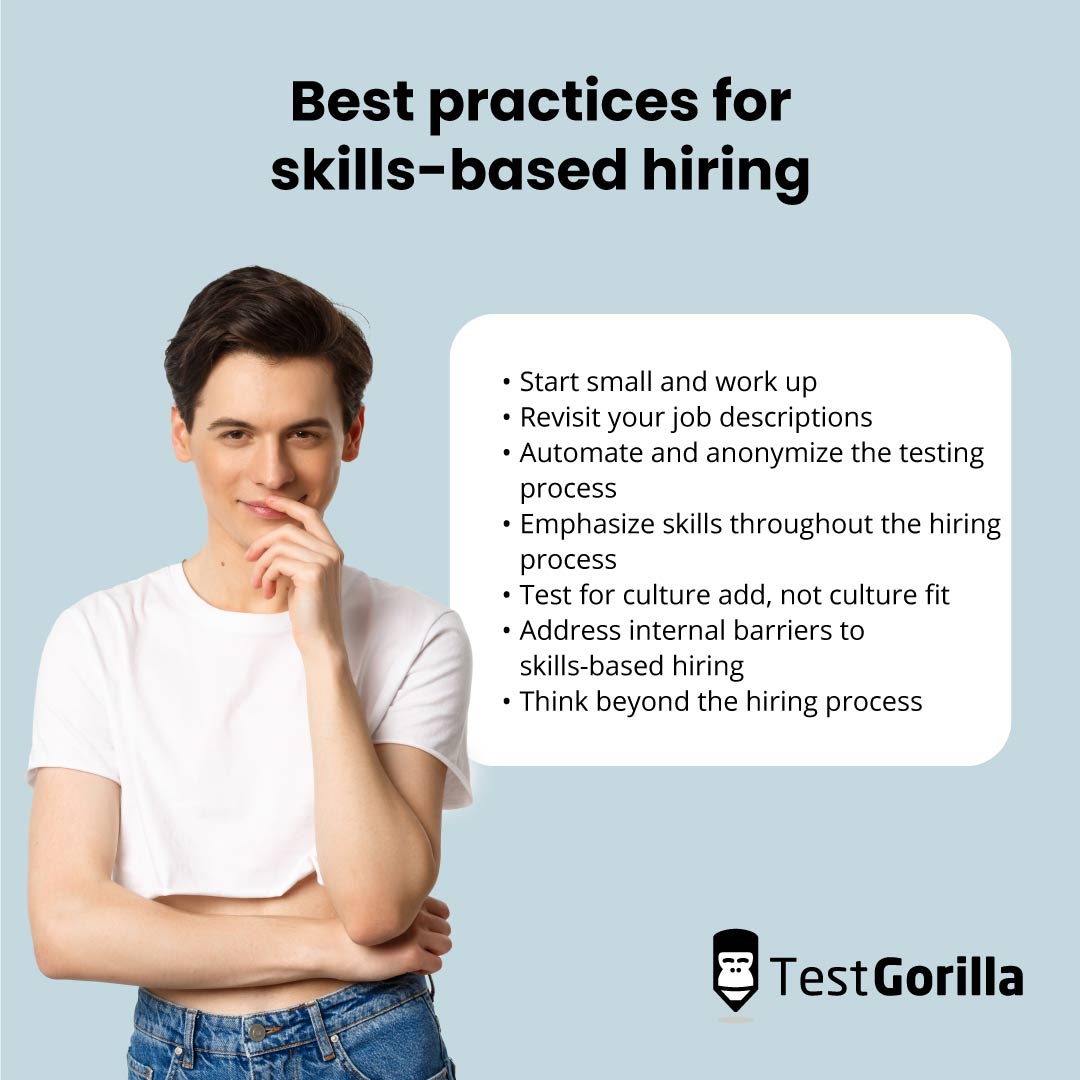How skills-based hiring levels the playing field
Now more than ever, companies must find new ways to stay competitive in the face of increasing automation and digitalization. Not to mention the gathering global recession.
Greater workforce diversity and prioritizing hard and soft skills can help, but traditional hiring practices don’t always identify and reward the right candidates. Even when you do find the ideal person for a role, increased occupational mobility, and opportunity brought by shifts in ways of working means they might reject a position that doesn’t meet their expectations – either before or after hiring.
Fortunately, equal-opportunity hiring practices are gaining ground. In this post, we’ll take a look at findings from our State of Skills-Based Hiring report that outline how to promote equal opportunities in the workplace.
We’ll cover how skills-based hiring works, what the benefits are, and how you can apply it to your company.
Why traditional hiring practices won’t get you the best candidates
Outdated, traditional practices like hiring based on resumes or connections create barriers for women, people of color, lower-income candidates, older people, and non-graduates, among others.
Resumes are a poor foundation for hiring as they can be unreliable (candidates may over- or undersell themselves), prone to bias, and time-consuming to sift through. Worse still, they don’t even predict job success.
All this creates cynicism among candidates and hinders the creation of more diverse teams. Just witness the landmark study “Are Emily and Greg more employable than Lakisha and Jamal? A field experiment on labor market discrimination.” The researchers found that candidates with white American-sounding names received 50% more interview callbacks than African-American ones – despite having the exact same resumes. This is despite growing evidence of the benefits of diversity for companies.
And it’s not just companies that lose out from outdated hiring practices. The shift to remote or hybrid teams and the Great Resignation (when people quit jobs en masse during the Covid-19 pandemic) mean candidates are increasingly unlikely to apply for – or stay in – positions that don’t meet their expectations. This is at a time when Gartner data shows the hard and soft skills required for open positions are rapidly increasing.
Fortunately, more equitable ways of hiring are emerging.
Let’s take a look at how one of them – skills-based hiring – works.
What is skills-based hiring?
Skills-based hiring is a recruitment method where companies hire candidates based on quantifiable skills, not subjective, bias-prone methods like resumes. It uses scientifically backed testing or assignments to assess applicants’ skills early on in the hiring process. These may be related to the hard and soft skills required for the role or designed to replicate on-the-job scenarios.
This approach helps employers to recruit top candidates by accurately identifying the most suitable applicants for every position. And it means the traditional CV and cover letter are no longer needed.
With skills-based hiring, companies select candidates based on online assessments and referrals before being invited for an interview. “This may feel scary to job applicants,” says Jacco Valkenburg, employer branding and recruitment trainer at the Recruiter University in the Netherlands, “but it’s fair. It offers opportunities to less experienced people who are good at their jobs. A spelling mistake on your resume or a weak cover letter are of less importance. Juniors can beat seniors on knowledge and skills and thus move into a higher position.” Essentially, with skills-based hiring, what you can do is more important than what you’ve done, where you studied, or who you know. This makes it a fairer, more rigorous, and more objective approach than hiring based on CVs, talent, or merit.
Let’s take a closer look at the main types of skills-based hiring.
The best insights on HR and recruitment, delivered to your inbox.
Biweekly updates. No spam. Unsubscribe any time.
Types of skills-based hiring
There are two main types of skills-based hiring: testing and assignments.
Testing
The most popular type of skills-based hiring used by respondents to our 2022 State of Skills-Based Hiring report is testing for role-specific skills.
Tests broadly fall into the following categories:
Hard skills assessments focusing on precise knowledge that candidates will need to
perform well on the job. For example, digital skills like programming, foreign language ability, or accounting.
Soft skills like communication, leadership and people management, teamwork, problem-solving, or time management.
Fifty-four percent (54.6%) of respondents in our survey confirm they are currently testing for role-specific skills.
Assignments
The second most popular type of skills-based hiring (used by 43.9% of respondents) involves giving candidates take-home assignments or asking them to submit samples of work. These might be mini-case studies or projects that enable the candidate to prove their ability to tackle the kind of tasks and problems they’ll face in the role. You could present them with a real-life project, a high-level challenge, or a simulation like a presentation or a customer call.
With assignments, candidates with more experience may naturally shine but everyone gets the same opportunity to demonstrate their skills.
Benefits of skills-based hiring
Skills-based hiring creates a wider, more diverse talent pool by leveling the playing field for women, older candidates, people of color (POC), and those without degrees or from lower-income backgrounds.
Skills-based hiring is on the rise, which is good news for workplace diversity and employee satisfaction.Source: State of Skills-Based Hiring Report
By measuring skills rather than education or experience, it creates opportunities for a more diverse group of people. And that positively impacts the quality of hires, employee and company performance, organizational efficiency – and your bottom line.
Greater diversity
Skills-based hiring increases diversity by encouraging applicants from a range of backgrounds, experiences, or qualifications. This creates a wider talent pool for companies to select from, making it easier to build a diverse workforce.
For example, Steelcase successfully implemented a diversity, equity, and inclusion (DEI) strategy to increase the representation of people of color and women in its workforce. The global office furniture brand ditched traditional hiring practices in favor of early skills identification and skills-based hiring. It also created HR positions specializing in sourcing diverse talent and revisited job postings to eliminate biased language, among other initiatives. As a result, it saw a 2% increase in female hires and a 30% increase in hiring of racial or ethnic minorities.
At TestGorilla, we’ve used skills-based hiring to enrich our team. Our SEO content writer, Dawn Gilfillan, found her age to be a barrier to entry when applying for roles as a commercial photographer. Transitioning to freelance writing, she experienced blockers due to a lack of journalism qualifications or experience. Happily, she found TestGorilla and took a skills test that confirmed she had what it took to join the writing team.
People often assume that careers are linear, so they think they need to hire someone with a specific type of background, education or experience. In reality, the most successful people don’t have a linear background, so it makes much more sense to evaluate them on their potential and skills, and not on what they’ve done in the past. There’s no way to break down barriers if you use traditional hiring practices. Opportunity is not provided equally and employers must be brave, in adopting skills-based hiring, to try to ensure that it is.
Eva de Mol, co-founder, Capital T venture capital fund
Improved ROI
Skills-based hiring also delivers greater ROI on recruiting processes by cutting time spent on evaluating resumes and reducing costly mis-hires.
By using cutting-edge tech to automate and anonymize testing, companies can slash time- and cost-to-hire and improve results by quickly identifying the most skilled candidates from a larger, more diverse pool – anywhere, in any industry.
In our survey, 92.7% of companies reduced mis-hires, 91.4% reduced time-to-hire, and 89.9% reduced overall hiring costs.
Increased productivity
Skills-based hiring also makes for happier, more productive employees.
According to our survey, 72.1% of team members recruited via skills-based hiring were happy or very happy in their current roles versus 62.9% of those recruited using other methods. Happier workers stay longer in their roles, which means 91.2% of companies experienced increased employee retention.
Of course, skills-based hiring isn’t without its challenges. But there are some best practices you can employ to get you off on the right foot.
Best practices for skills-based hiring
We’ll go into how to apply skills-based hiring in more detail in a future post. For now, these are our go-to tips for success.
Start small and work up
Look at the roles with the highest time-to-hire or turnover and identify whether skills gaps are the problem. If so, adopt a skills-based approach to filling those roles or reskilling or upskilling your existing workforce. Then, test your hypothesis and iterate.
Revisit your job descriptions
Eliminate biased language and focus on competencies, skills, KPIs, or day-to-day requirements rather than education or experience.
Automate and anonymize the testing process
This ensures greater efficiency and eliminates any chance of interpretation bias. For example, by removing an applicant’s name, photo, date of birth, address, and hobbies.
Emphasize skills throughout the hiring process
Skills-based hiring doesn’t end with the initial test. Identify and test for skills early, but don’t stop there: you also need to focus interview questions around skills and practical requirements.
Test for culture add, not culture fit
This helps avoid unconscious selection bias and ending up with a homogenous workforce. Culture is highly subjective and depends on your organization’s demographics. Instead, test for alignment with your mission, vision, and values.
Address internal barriers to skills-based hiring
For this to work, you’ll need buy-in from stakeholders and robust systems, tech, and processes in place. Think about the investment in terms of time, budget, and HR team training.
Think beyond the hiring process
Modern candidates want to know about opportunities beyond just career advancement. Be sure to outline your strategies for ongoing knowledge growth, development, upskilling, and reskilling. Let them know you have a plan in place to ensure both they and the company remain competitive.
Recent trends in remote and hybrid working
The world of work is changing fast: Covid-19 has accelerated the trend toward
remote work and globally distributed teams. Our survey found that 18% of full-time employees now work remotely and many more mix ‘hybrid’ home and office working.
This means companies are no longer restricted to hiring based on location and can access global talent. If you can’t meet candidates in person, or follow their progress in the office, it’s even more important to have robust, reliable hiring processes in place.
We found 58% of organizations using skills-based hiring adopted it within the past two years, which we attribute to the shift to remote working. It’s particularly favored by hybrid (81%) and remote (75.5%) organizations vs 70% for in-person setups.
Perhaps unsurprisingly for a tech-first approach, companies in the technology sector tend to be trailblazers. For example, telecommunications (85.2%) marketing (86%), and broadcasting and publishing (88.1%). This is in contrast to hotel and food services (just 62.2%).
The shift to remote has been generally beneficial for many workers and has opened up a lot of opportunities for employers, too. We need to be conscious of the new challenges around diversity that come from hiring remote workers, but on balance, accessibility has greatly improved with the shift to remote working.
Hung Lee, Curator, Recruiting Brainfood, UK
See here for our take on the future of remote work.
Skills-based hiring: A fairer way to recruit
Traditional, biased hiring methods like resumes and referrals are no longer an effective weapon in the war for global talent.
Instead, companies need to look beyond outdated recruitment practices – which favor certain genders, ethnicities, etc. over others – to attract, hire, and retain top talent and build more diverse workforces.
One way to do that is skills-based hiring, which involves testing applicants’ hard and soft skills pre-interview rather than going on education or experience. When you look at skills – rather than a candidate’s age, background, education, or experience – you level the playing field for women, people of color, those from less privileged backgrounds, and more.
And that makes for a more diverse, happier workforce and a more efficient, profitable, and competitive company.
Want to become more competitive by creating a diverse workforce? Skills-based hiring levels the playing field – so you can hire the right people for the job. Download the report to learn more.
You've scrolled this far
Why not try TestGorilla for free, and see what happens when you put skills first.



















